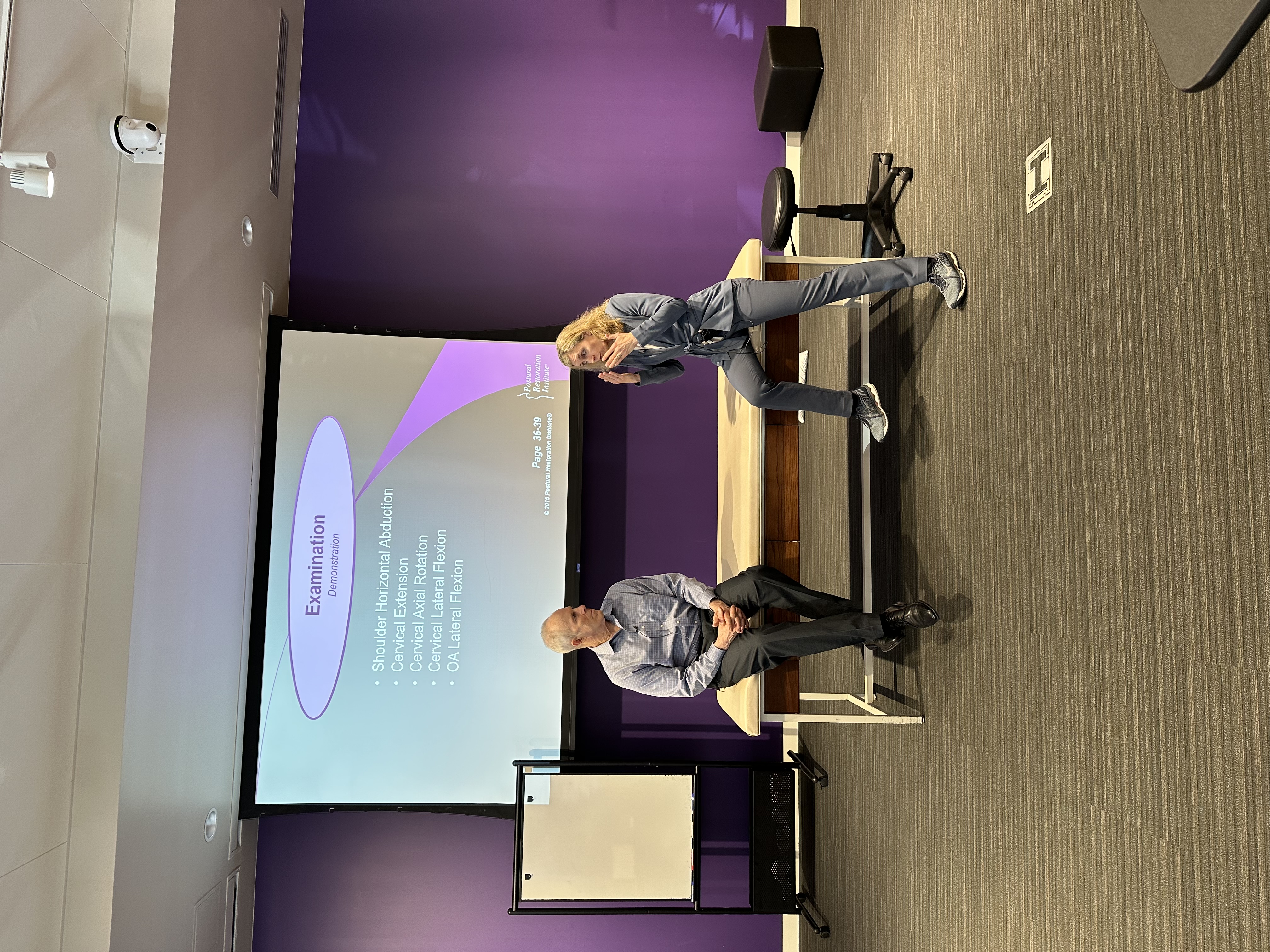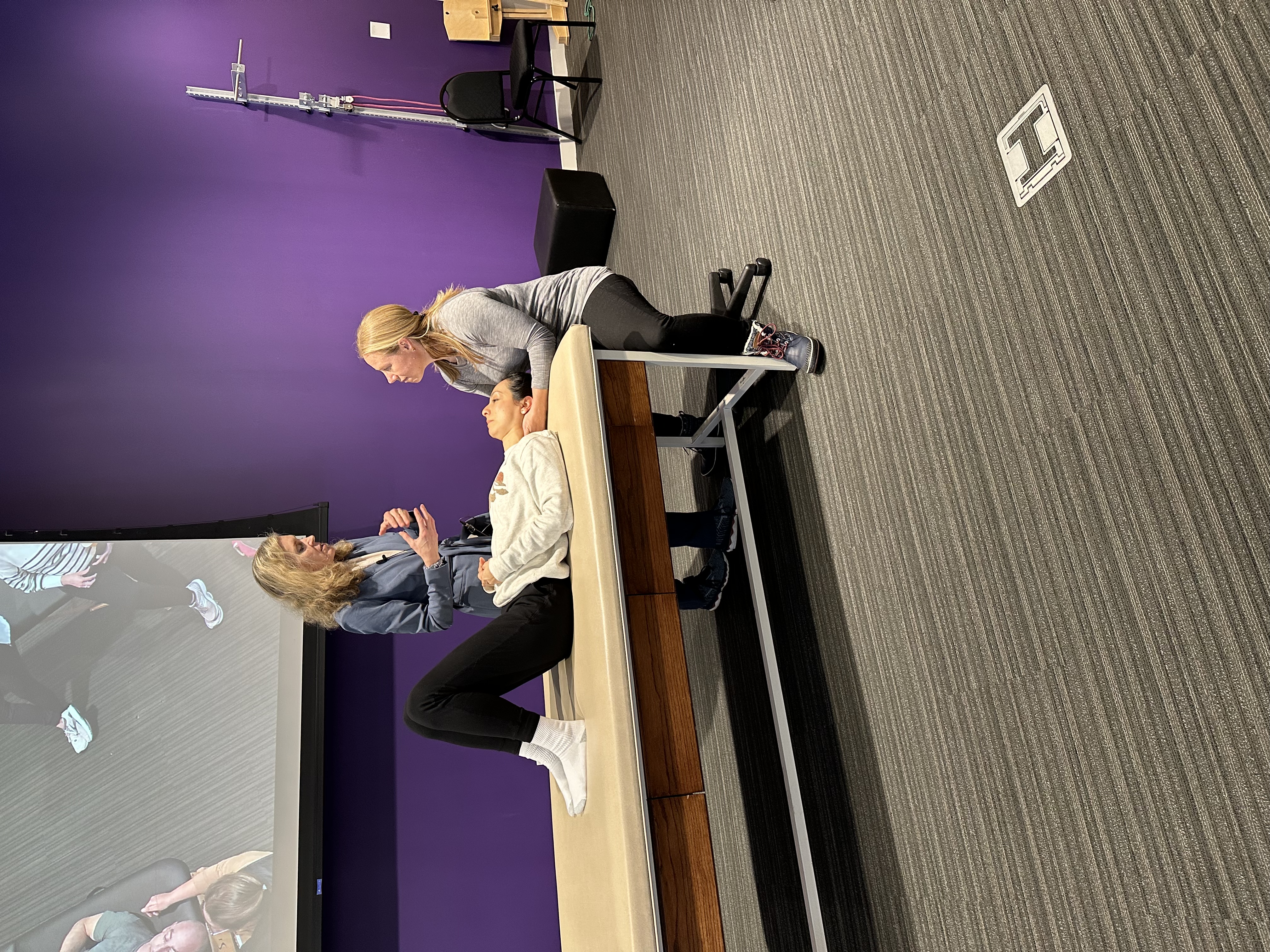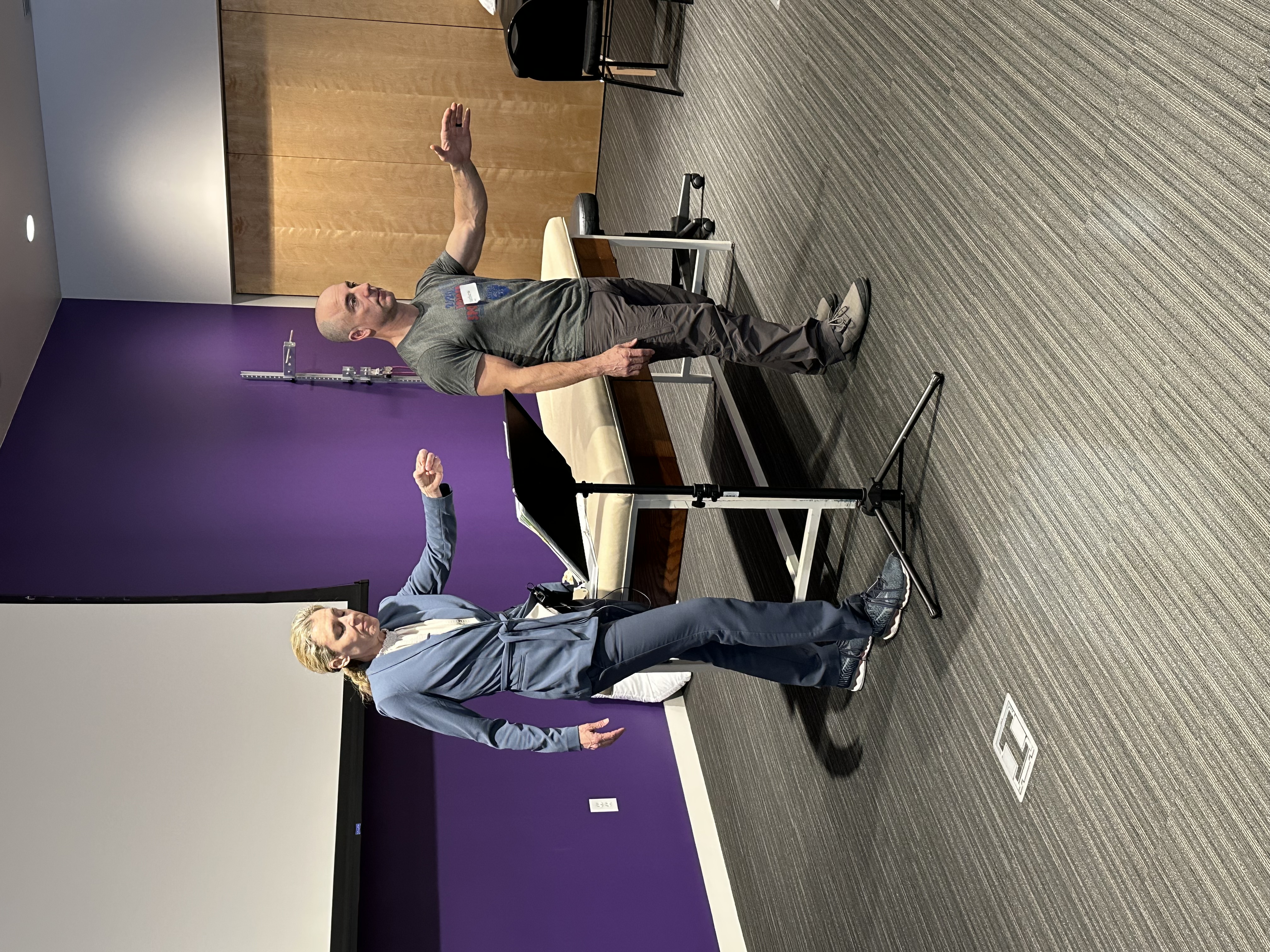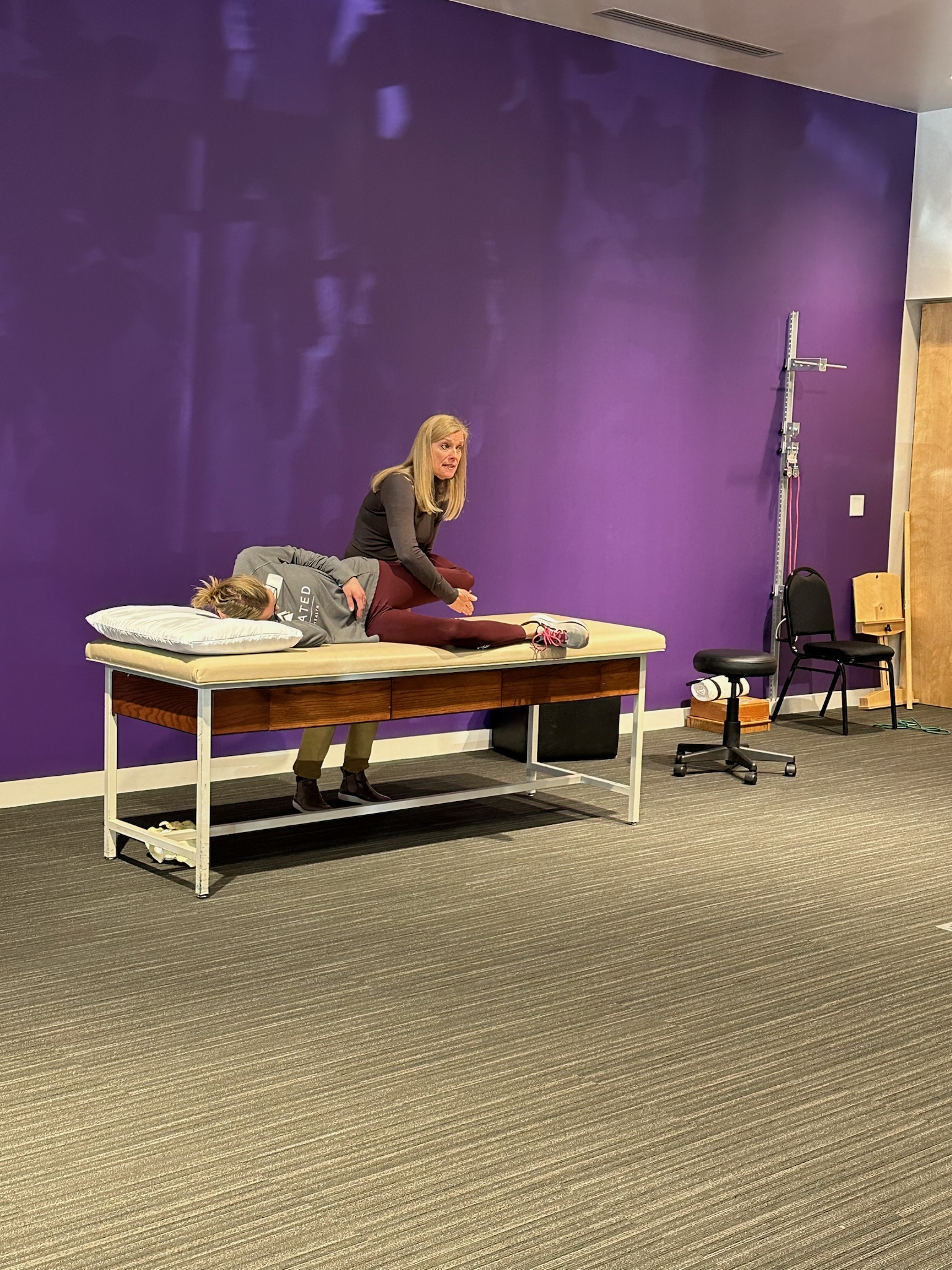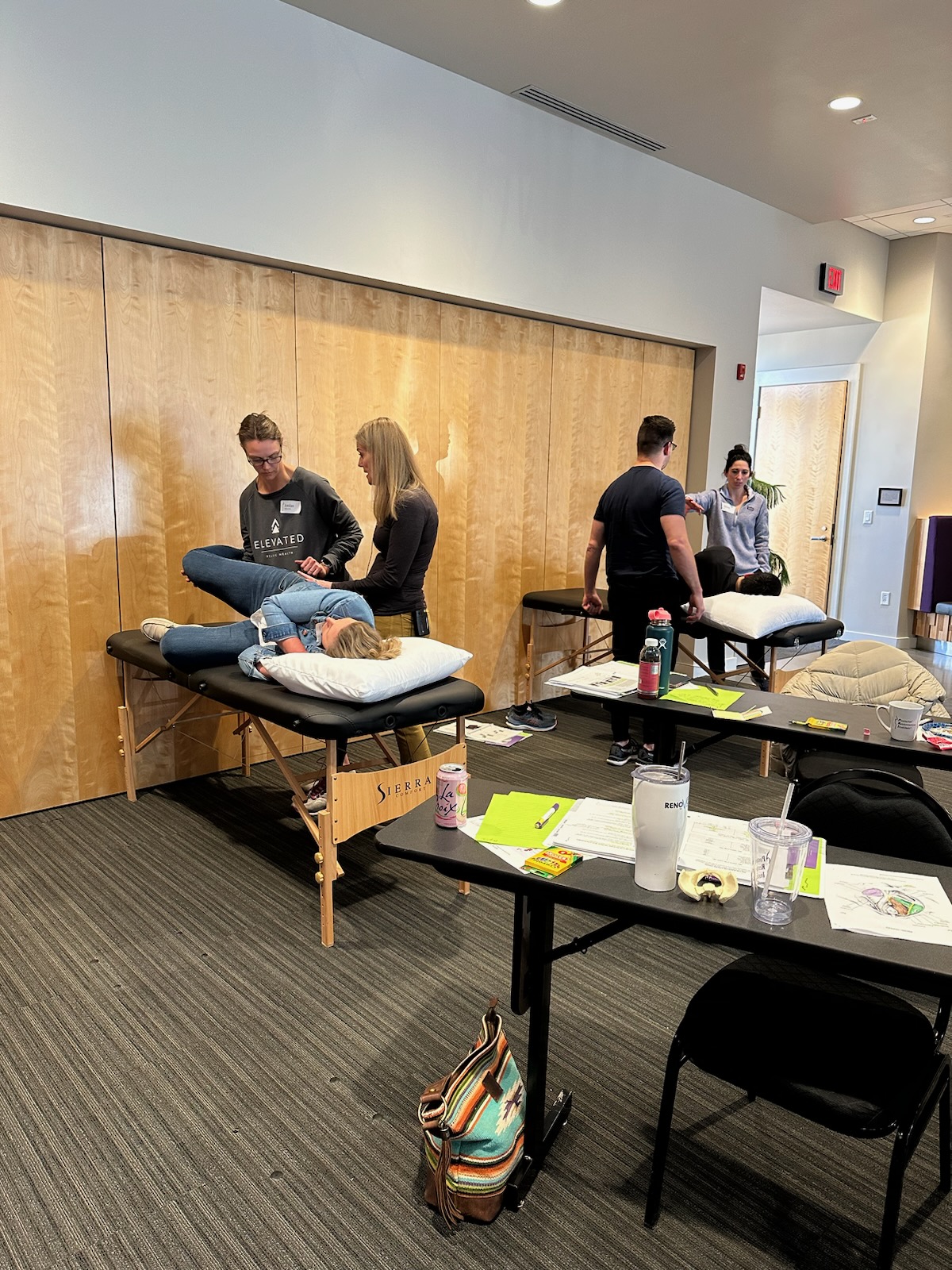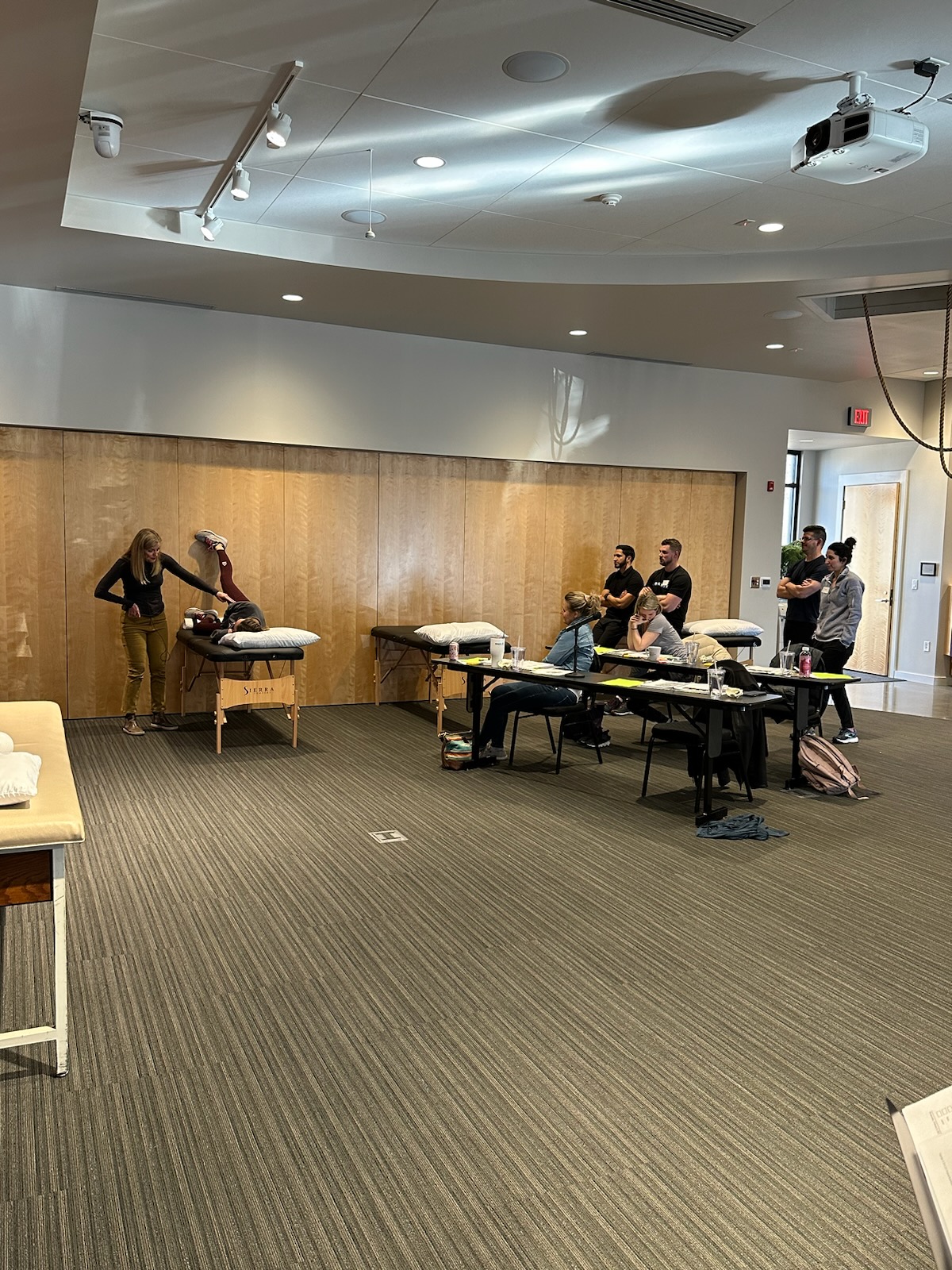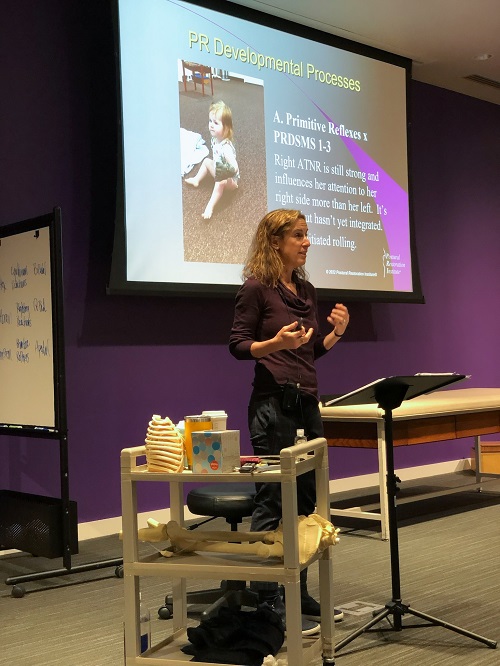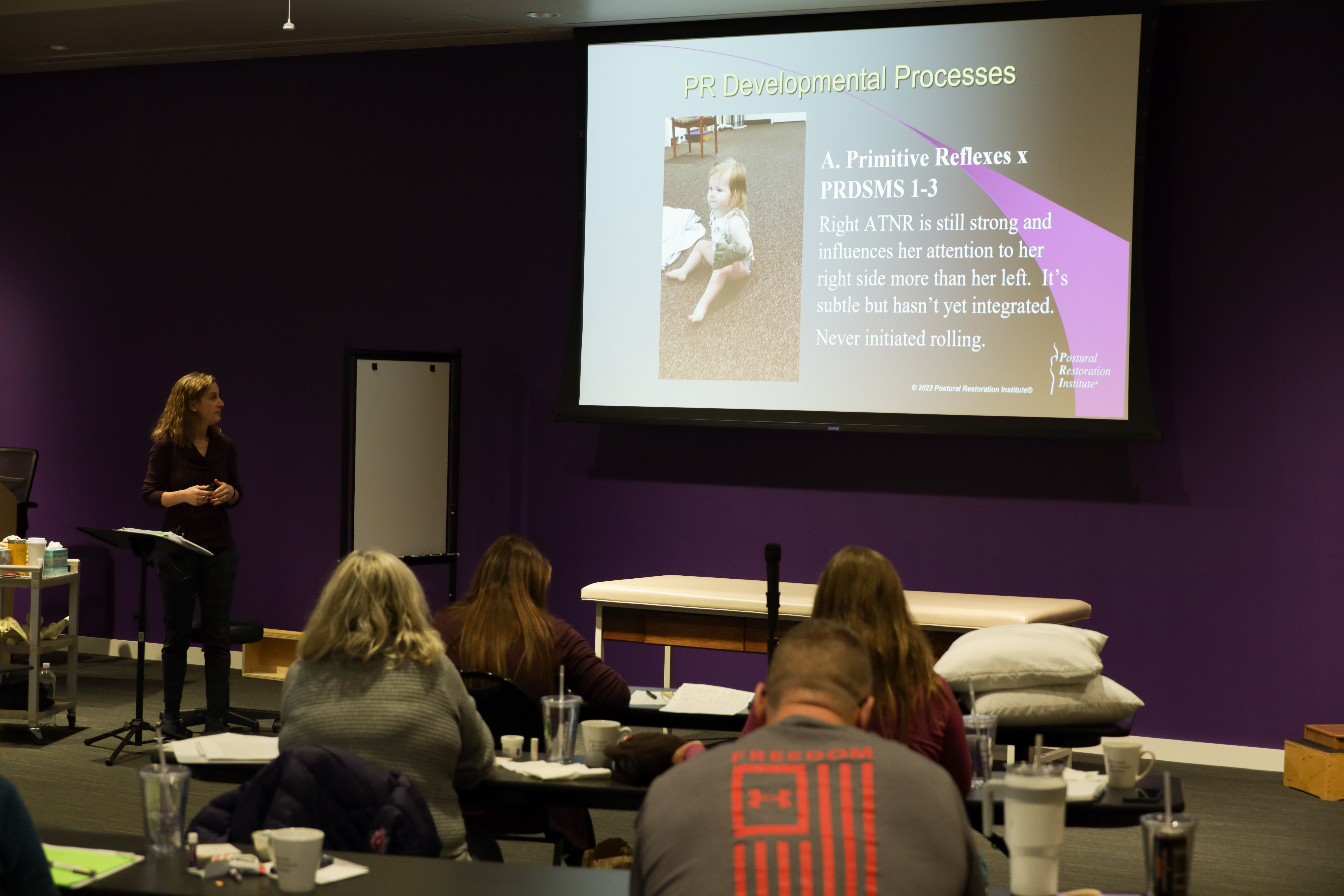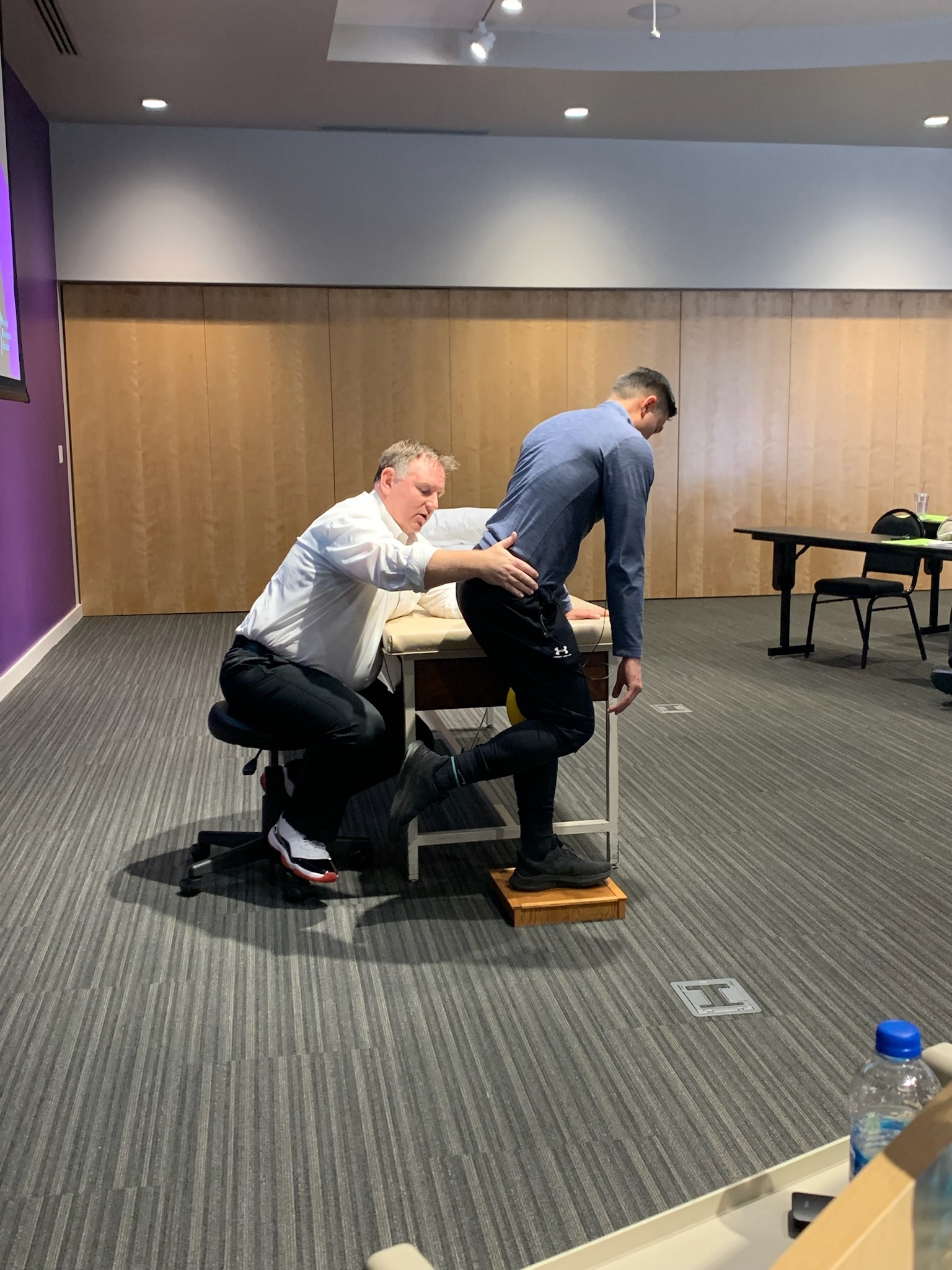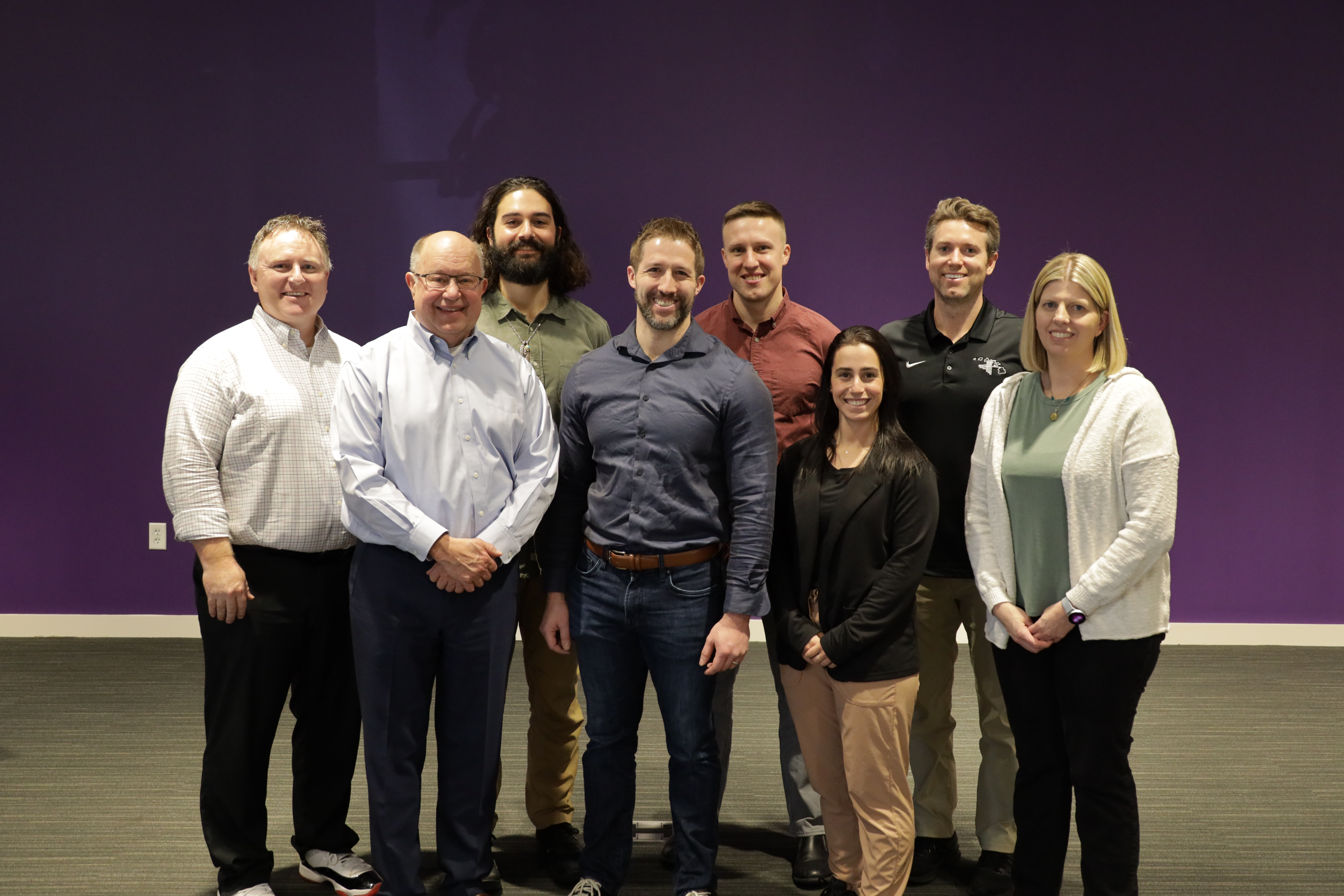The ENT Institute of Atlanta played host to the most recent Postural Respiration. This course encouraged attendees to look below the head and neck for “bottom-up” influences on the conditions you treat. What do hip pathology, low back pain, headaches, and TMD have in common? A thoracic diaphragm that is patterned in its position and activity.
We discussed how the static asymmetries of our torso lead to overactive chains of muscle below the diaphragm (anterior interior chain and posterior exterior chain) and above the diaphragm (brachial chain). These chains create dynamic patterns of breathing that become entrained in our nervous system and that can restrict healthy alternating, reciprocal movement when upright. Numerous videos were presented that reflect how patterned breathing influences walking: poor posterior right arm swing, reduced thorax rotation and center of mass shift onto the left leg, and waddling, to name a few. Our stronger, better leveraged right diaphragm creates twist and torsion of the airway which, in turn, promotes inefficient strategies to pull air in, including belly and neck breathing, with their associated forward head posture, hyperinflation, and overly extended thoracic spine and rib cage. Neurologically-driven patterns of airflow define how we sense ourselves in the space around us, how we move through it, and our vulnerability to pain and injury.
Many thanks to Kaitlin Blankenship, ATC; Jose Crespo, PT; Mischelle Hardwick, PT; Allison Robbins, PT; Tre Tate, CPT; and Adria Wofford, PT for volunteering to model the tests and techniques.
Kristen Spencer, PT, PRC, was invaluable in assisting with lab and adding clarity to questions and concepts.
The practitioners at ENT Institute did an awesome job of accommodating us guests: Jose; Ann Gerber, PT; Jennifer Hansen, PTA; Mischell; Jennifer Harrell, PT; Deisy Nunez Aguirre, PT; Allison; Olivia Terrell, PT; and Cristen Walker, PTA.
I hope you get the chance to host again. If so, Cervical Revolution would be a natural fit for your caseload. You will learn about the influences of an additional chain of muscles, the temporal mandibular cervical chain. You will gain an understanding of how the concepts of Postural Respiration and patterned air flow apply to the cervical spine and cranial patterns and their potential to create malocclusion, TMJ dysfunction, headaches, and visual-vestibular disturbances, all of which you routinely address in the clinic.

